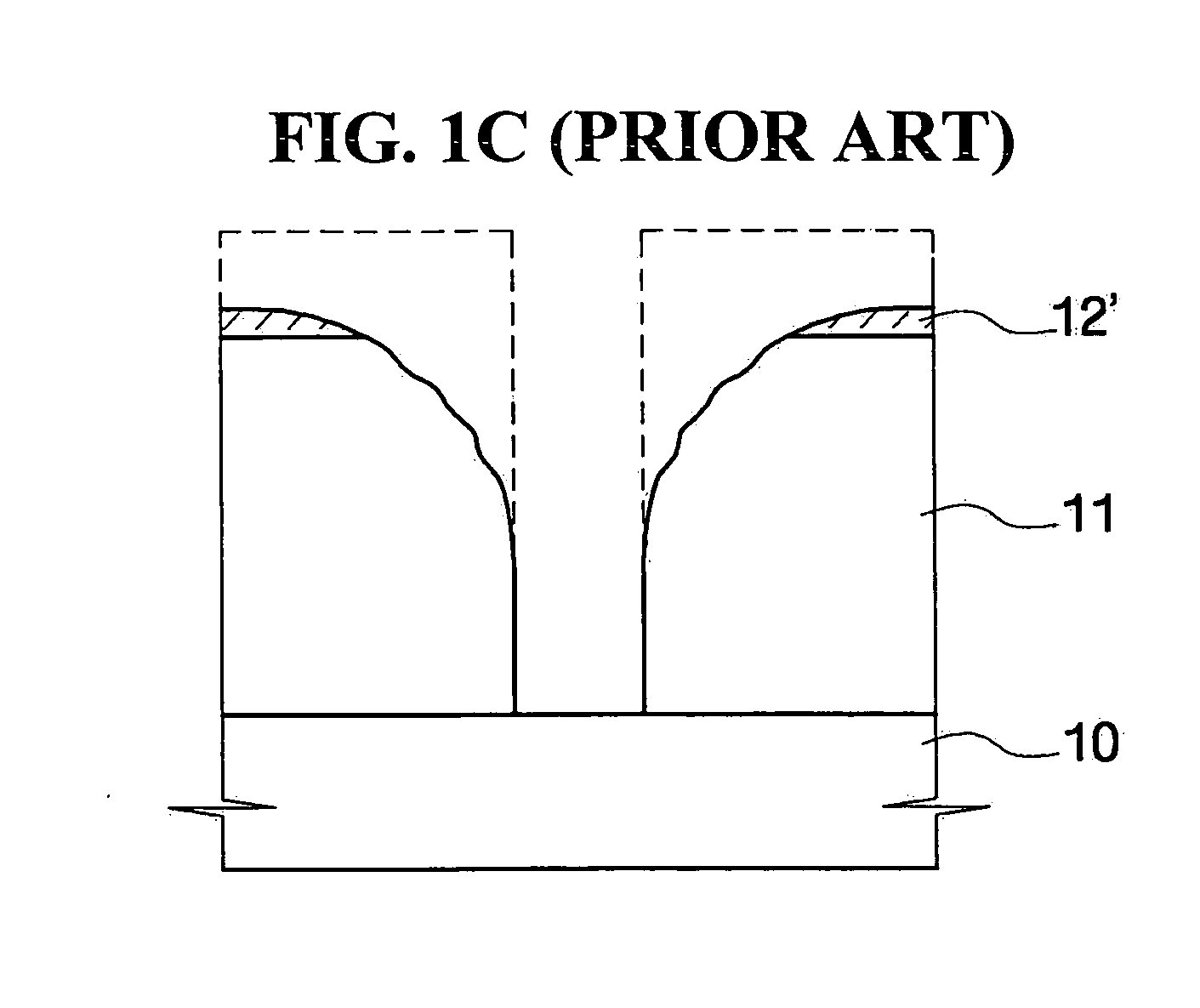Dry etching method using polymer mask selectively formed by CO gas
a technology of selective etching and polymer mask, which is applied in the direction of semiconductor devices, electrical equipment, basic electric elements, etc., can solve the problems of difficult to form fine patterns using a conventional photolithography process, difficult to form photoresist patterns having a good profile, and complicated manufacturing processes of semiconductor devices. achieve excellent etching profile and high resolution
- Summary
- Abstract
- Description
- Claims
- Application Information
AI Technical Summary
Benefits of technology
Problems solved by technology
Method used
Image
Examples
Embodiment Construction
[0024] Exemplary embodiments of the present invention will now be described more fully hereinafter below with reference to the accompanying drawings. This invention may, however, be embodied in different forms and should not be construed as limited to the exemplary embodiments set forth herein. Rather, these exemplary embodiments are provided so that this disclosure will be through and complete, and will fully convey the scope of the invention to those skilled in the art.
[0025] A dry etching method according to an exemplary embodiment of the present invention is described with reference to FIG. 2 through FIG. 7. Referring to FIG. 2, a semiconductor substrate having a photoresist pattern formed on an etching target layer is placed in a reactor (S11). Referring to FIG. 3, an etching target layer 31 is formed on a semiconductor substrate 30 by chemical vapor deposition (CVD). The etching target layer 31 may be formed of a material that can prevent a polymer reaction between the etchin...
PUM
 Login to View More
Login to View More Abstract
Description
Claims
Application Information
 Login to View More
Login to View More - R&D
- Intellectual Property
- Life Sciences
- Materials
- Tech Scout
- Unparalleled Data Quality
- Higher Quality Content
- 60% Fewer Hallucinations
Browse by: Latest US Patents, China's latest patents, Technical Efficacy Thesaurus, Application Domain, Technology Topic, Popular Technical Reports.
© 2025 PatSnap. All rights reserved.Legal|Privacy policy|Modern Slavery Act Transparency Statement|Sitemap|About US| Contact US: help@patsnap.com



